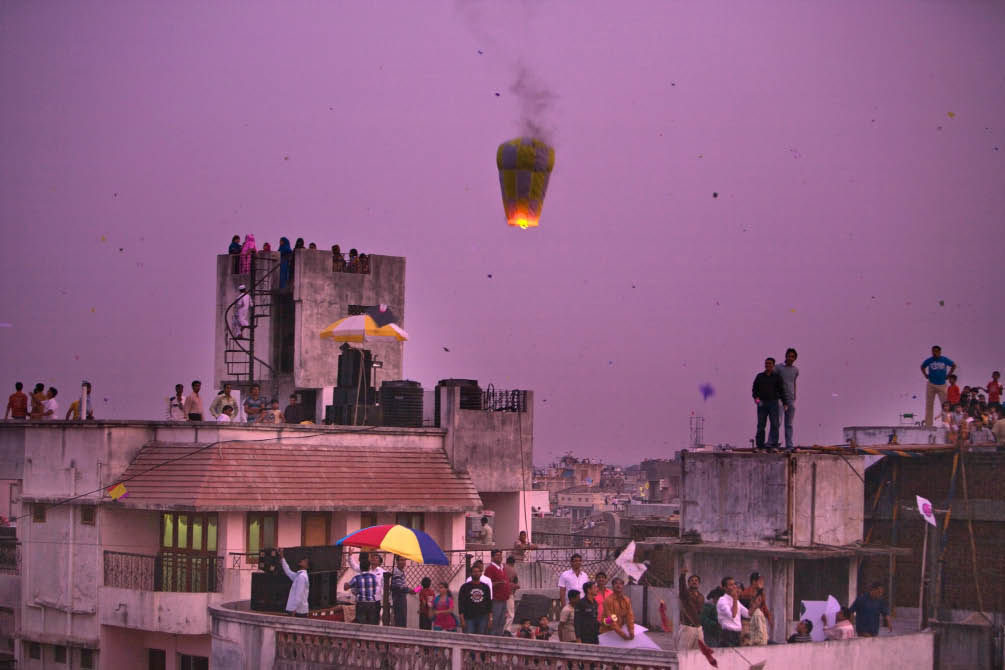Arts
International Kite Festival

Uttaryan International Kite Festival in Ahmedabad attracts people from all over the country and, in recent years, international kite fliers as well
Small roadside fires, children bundled in sweaters and skies teeming with thousands kites of every conceivable size and color greet you in Gujarat during Makarsakranti Ñ a harvest festival celebrated on Jan. 14 throughout India.
Makarsakranti marks the transition of the sun from the Sagittarius zodiac to Capricorn. It is celebrated as an auspicious day with great enthusiasm to thank God for their bounty throughout India. In Gujarat, it is marked vibrantly by flying kites or Patangs.
This Uttaryan International Kite Festival in Ahmedabad attracts people from all over the country and, in recent years, international kite fliers as well. Terraces are transformed and almost every roof top teems with people, some flying kites, others hoping to catch a falling kite, but most simply spectators, taking in the two day long colorful, exploding spectacle in the sky. Streets are transformed into kite bazaars, selling a wide variety of kites, threads and food, such as undhiyu (mixed winter vegetables) and many varieties of chikkis (snack made from peanuts, sesame and jiggery).
In the days leading up to the festival, kite aficionados engage in extensive preparation, discussion and debate around the best kites, threads and strategies. The aim is not just to fly your own kite successfully, but to bring down as many other kites as possible. Kite flying is an art that requires an appreciation of wind currents, as well as the angle, pressure and direction of the kite thread, which is laced with powdered glass and glue. The bigger a kite you are able to bring down and capture, the larger your celebrity.
In pursuit of a falling kite, people jump recklessly from one terrace to another. Each time someone’s kite is cut, impromptu cheers of ÒkaatiÓ (cut) and Òlappet Ò(roll in the string) erupt. Often the task of catching falling kites is given to children, who race out with long sticks to retrieve kites stuck in trees, electricity poles and other hard-to-reach places. A mixture of lai (rice glue) is always handy to repair torn or damaged kites.
As the day progresses, individual collections of retrieved kites become larger and competition heats up. For two days, strangers become friends and sometimes the rivalry of kite fights turn friends into kite enemies. Entire neighborhoods transform into a large carnival with a plethora of masks, hats and colored sprays. Even people not actively flying kites are enthralled by the airborne spectacle to which they enjoy front row seats from their balconies.
As the sun begins to set, the kites are drawn in, but the celebrations are far from over. It is time for illuminated boxed kites to be launched. These kites known as tukkals sail forth and many households light fireworks, illuminating the night sky.
